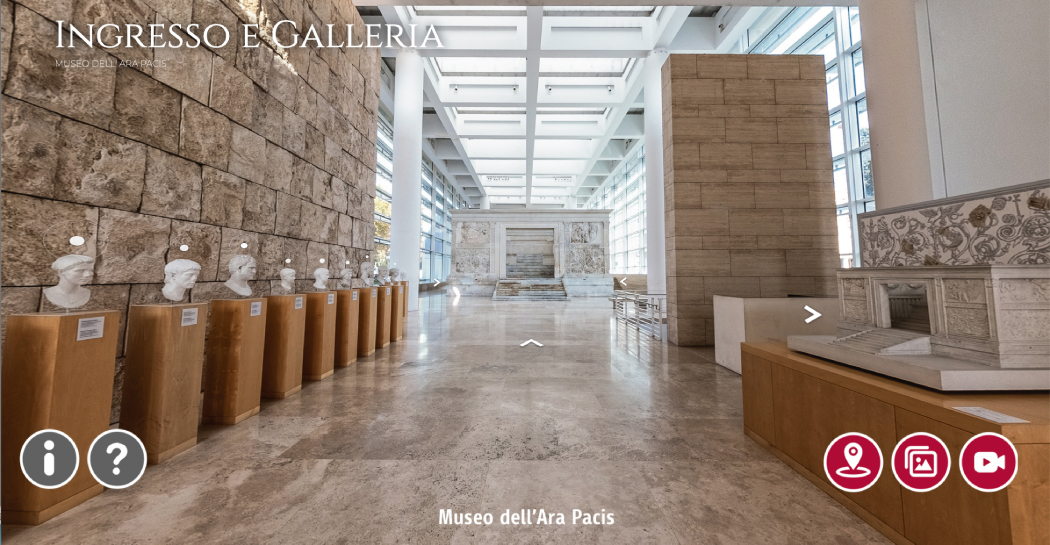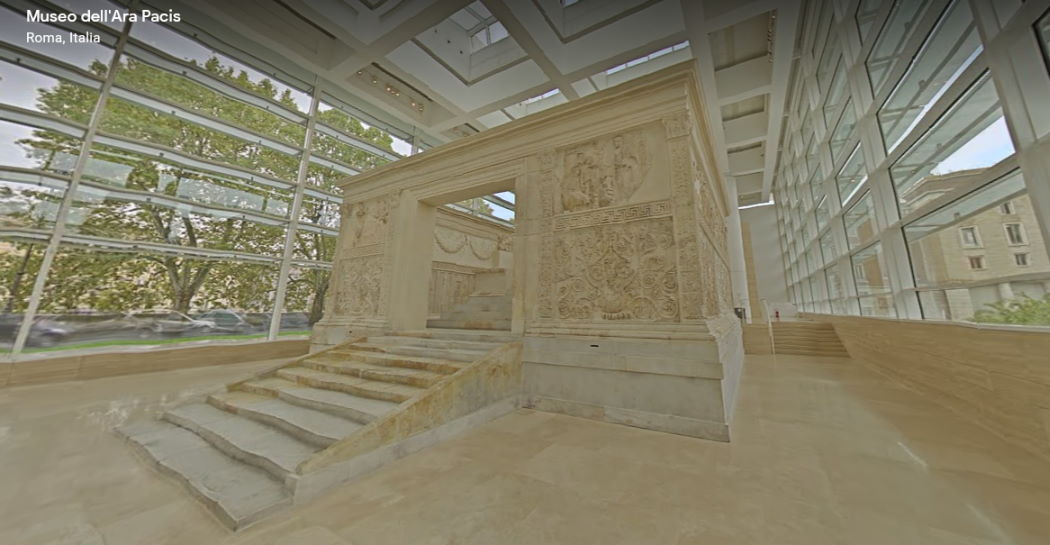The twentieth century pavilion
On the 20th of January 1937 an investigation was begun into the possibility of reconstructing the altar. As the idea of recreating the altar in its original position had been rejected from the moment at which it became clear that this would involve the destruction of the Fiano-Almagià palace, various alternatives were proposed: reconstruction in the Museum of the Baths, the building of a subterranean museum under the Augusteum, or the reconstruction of the Ara Pacis on the Via dell'Impero.

But it was Mussolini who decided to reconstruct the Altar near to the Augusteum, "under a colonnaded building" between the Via di Ripetta, and doing it in less than a year and a half. The final design, presented to the Governorship in November 1937, was not entirely respected during the building works, probably because of the serious delays that accumulated during the work. In fact, Ditta Vaselli, who had won the competition to make the building, was only given the site a few months before the 23rd September, the date fixed for the inauguration of the Altar of Peace. Morpurgo, the pavilion's designer, never came to terms with the ways in which the design had been simplified: cement and fake porphyry were used instead of travertine and precious marble, while the rhythm and course of the pilasters, both on the sides and the façade, had been changed.
Behind these compromises was an unwritten agreement between the architect and the Governorship, to build only on a provisional basis and to return the building gradually to its original design after the inauguration. However the sums of money required, the uncertainty of the time-scale and the war hanging over the entire project, meant that this was never accomplished.
During the years of conflict, the glass was removed and the monument was protected with sandbags, subsequently replaced by an anti-shrapnel wall. It was only in 1970 that the building was cleaned up.







































